It’s Friday and we’re taking the opportunity to re-run this absolutely classic WITI. - Noah (NRB)
Michael Grant (MG) is a creative director at Avocados and Coconuts in SF. He’s writing a book set in New Mexico, which required deep field research into adovada sopaipillas and points of fringe UFOlogical interest. When he fills his gas tank, it’s a used blue Honda Odyssey.
Michael here. If you go into any public-facing large-scale money-making enterprise, chances are the layout has recently been optimized to get you from consideration to choice to payment with as few dropoff points as possible. You know, just like how it happens online. The word physical experience designers use for it is “streamlined.” They are aiming for a frictionless flow, and store layouts and the checkout process have evolved to be more efficient.
Why is this interesting? is a reader-supported publication. To receive new posts and support my work, consider becoming a free or paid subscriber.
Subscribed
Except for gas stations. Because, well, they didn’t need to change. The layout has been a perfect fit for an optimal consumer experience since…forever? There are pumps and a convenience store. Maybe some crackly top 40 radio. You get gas, grab snacks, and go. A gas station is a gas station is a gas station.
Except one time, at a Shell station near SFO, the music playing at the gas pumps was so clearly incongruous with the setting that I had no choice but to Shazam it. It was “Tears for Adagio” by Magdelayna, an ambient trance confection I’d never heard of before. Huh. Anyway, that’s when I turned around and noticed the dinosaur.
I was not expecting the T-rex in the tophat with the boombox at the Shell station. I went to get a closer look, as the Magdelayna track swelled behind me. There was a little sign in front of my saucy new dino friend.
What the hell was going on here? The dino sculpture was fine. The sign was ART. All of a sudden it hit me: for the first time in my life, I had a favorite gas station.
That was summer 2021. From then on, whenever possible, I went back to the Tanforan Shell to get my gas, even though it’s 20 minutes south of where I live in SF.
Every time, I noticed a new detail or two. Like the sign at the self-vacuum station…
Or, well, everything about the mini-mart from the name to the statue to...
Wait…was that a Zoltar machine? Why wouldn’t it be.
Then earlier this year, inside the Hangry Mart, I saw this message about the car wash.
I wanted to have “the full experience!” Oh yes. So I came back later that week, after sunset of course. During “showtime.” It exceeded my high expectations.
A few weeks later, again inside the Hangry Mart, there was a new posting.
This being the Tanforan Shell, my favorite gas station, I was not surprised when they quickly followed through on their promise of a healthier mini-mart.
But it wasn’t all smiley good vibes. The messaging was pretty bold.
And it extended all the way to the pumps.
Why is this interesting?
Our reliance on gasoline is catastrophic for the planet. We go to gas stations to get the bad stuff. But this gas station is trying hard to be good. It also seemed improbable that this was all happening at an official Shell station, not some independent operation.
I finally reached the point where I needed to know more about who is actually behind the beautiful madness of the Tanforan Shell. I called them up and the manager, Roberto Gonzales, gave me the name and number of the man I was looking for: Bobak Bakhtiari. I left him a message, told him there’s an entire newsletter dedicated to things we find Interesting, and that I’d like to write about him and his gas station.
I got the text a few days later: “Hi Michael. Let’s chat tomorrow? - Bobak Bakhtiari.”
Bobak and I ended up talking for close to an hour, so the following interview has been edited for length.
MG: How long had you been thinking about making the convenience store plant-based?
Bakhtiari: Once I started delving into research on factory farms it was pretty immediate. It really just hit me hard. It was a four minute video by Animal Recovery Mission, an undercover investigation into Coca Cola organic dairy farms. I watched it and I started crying and then for the next month and a half, I was literally just sobbing every five hours. And I was like, wow, for like the last 40 years of my life, I've been sponsoring terror essentially. And contributing such immense misery to these animals. So I decided, okay, this store has to be plant-based. Even if some employees at first still tried to bring Hostess back, hiding it in the corner.
MG: Your emotional response really comes through in the rebrand. I could tell right away this wasn’t some greenwashing. It’s really in-your-face. I mean, there's signs on the pumps with cows saying, “Dairy takes babies from their mothers.” What was your thinking in making the message so bold and so prominent throughout the entire gas station, from a customer experience standpoint?
Bakhtiari: I wanted the site to be not only plant-based, but a source of advocacy and education–as comprehensive as possible. And when I first started, it was actually a little bit aggressive. So I kind of toned it down, but I still wanted it to be loud. I've always wanted to bring some wonder to like the mundane…some playfulness to just, you know, pumping gas.
MG: That's actually a good segue, because that playfulness is the first thing I noticed about Tanforan Shell–even prior to the plant-based rebrand. It was the music, which felt so random and different for a gas station. So what’s up with the music at the pumps?
Bakhtiari: I just wanted to steer away from mainstream gas station garbage music. Gas stations have evolved into being like high volume compulsive junk food accompanied with just a lame setting that no one really cares for. I wanted to make it special and maybe a little bit emotional. So we play music that gives some sort of awe or relaxation, or sometimes just Gregorian chants for two weeks.
MG: And when did you start adding all the other touches at the gas station–like the gardenias, the murals, and the sculptures?
Bakhtiari: The first idea I had was to put a big whale mouth at the exit of the car wash. And for two years I basically fought the city and lost. If you Google “whale mouth car wash” you get like nine articles about me not getting a permit. So then I was like, you know what, I'm just going to classify all the art as merchandise. So I started doing that. I list a big dragon for thirteen grand but I don’t really care to sell it. As long as it’s merchandise, I can keep it out.
MG: So that big dinosaur sculpture is technically merchandise?
Bakhtiari: Yeah. I found the dinosaur off [highway] 92 and bought it off a guy that has a ton of dinosaurs, near Half Moon Bay. And when I transported it, that was a scary mission. I kept thinking he's gonna hit a pole or a power line or something on the ride over.
MG: But who added the top hat, the boombox, and the lighting?
Bakhtiari: Some sculpture friends. Props2C is the name, which is a horrible name for the range of amazing work. His real name is Tony Rivera and he does some incredible work. He did the Poseidon on the roof, and the ice cream cone sculpture. He was actually commissioned to do the whale mouth. I’m just kind of giving him ideas, sketch things up, and then he’ll do it.
MG: Can you tell me about the signage overall? They were quite irreverent and meme-y even before the rebrand.
Bakhtiari: I don't put up anything that Shell wants me to put up. In fact, they've threatened to give me a lease violation many times, but I have pretty good attorneys. You know, like they tried to get me to take Trump out of the mouth of the dinosaur. He was in there for a while. They were freaking out and I just reached out to legal and they were like, yeah, there's nothing on the lease that says you can't put a politician in the mouth of dinosaurs, so you're fine. And I sent that to them and they just went quiet.
MG: To repeat: there's nothing in the Shell corporate agreement that says you can't put politicians in the mouth of a dinosaur?
Bakhtiari: Correct.
MG: Do you think Shell will change that because of you?
Bakhtiari: Possibly, but generally our site does pretty well. So they see me as sort of a loose cannon that will fight for whatever I want. I mean I'm not supposed to put anything near the Shell logo–but I'll fucking cover the Shell logo with an animal rights sticker. My fuel supply agreement is up in like 10 months and they're trying to bribe me to renew it, but I'm probably gonna rebrand the whole site as Hangry Planet and slowly phase out of gas. Maybe I’d keep the car wash going too.
MG: Ok, so about the car wash…is there a name you have for the nighttime car wash experience?
Bakhtiari: It's been evolving. We had Tunnel Vision for a while. And Bubbletown Video Show. Now I just prefer VR wash.
MG: What made you wanna do that?
Bakhtiari: It was about five years ago. I found out that theme park rides are like roughly five minutes–and the car wash is five minutes. So let’s do a light show. But then I was like, okay, how can I also get music in the car? We set up an FM modulator for the audio, linked that up to the media server. And then it took about five months to get the projectors dialed in, to get the right enclosures so they don’t get wet. Everyone thought I was crazy. And there’s hiccups, but when it's dialed in it really has a nice immersive feel to it.
MG: But why? What makes you actually want to take all these steps and spend all these months, or years, dialing in this immersive experience in a car wash?
Bakhtiari: I'm sure you'd agree that, you know, when you're a child and you go through a car wash, there's a level of awe and wonder. And I wanted to excavate and amplify that. Like how can I make it 800% more exciting for children and have a “wow, what the fuck!” going on for adults? Like a five minute self-care wash experience, a sound healing experience. A lot of the music that we have, we actually work with a sound engineer, utilizing a lot of sound healing frequencies. So there's a psychological self-care aspect to the wash as well.
MG: Before we spoke, you sent me a recent article on the Hangry Mart from a site called Inhabitat. It said you are planning to shoot a commercial called “Where’s My Snickers, Bitch?” that will possibly feature Miley Cyrus. Were you joking around?
Bakhtiari: No. I wrote this kind of borderline controversial ad and shortlisted like 10 celebrities. She was the first that we reached out to. Her agent is being kind of difficult, but my proxy to Miley is hopeful. And if it doesn't work there's some backup.
MG: I noticed a sign at your gas station that says that you donate 10% of profits to charity. Where is that money going and how much have you raised?
Bakhtiari: We used to do 3% and raised it to 10% three or four years ago. Since I started doing that we’ve probably raised around $500,000. Essentially there's hunger relief, orphanage projects, and schools through Moms Against Poverty. Then there's animal welfare organizations like Animal Recovery Mission. And also we give to substance abuse treatment, nature education, local public schools...
MG: So you’re trying to do a lot of good for animal rights and, it sounds like, all kinds of other issues. Have you thought much about the disconnect between that and the fact that gas stations are, at best, a necessary evil at this point? That what you sell and how we use it is objectively bad for the planet?
Bakhtiari: Right, right. It’s something that can feel inherently dirty, regardless of the desire to do good. It's a pretty loud paradox. I do intend on phasing out gas over the next four years, and a big part of that is because of that inherent paradox. So I have given that quite a bit of thought. I think regardless of the irony there, the whole concept of Hangry is to try to inspire other businesses by showing a model where like, “Hey, if you go more ethical it's not business suicide, you're actually doing better.” It becomes like a destination of sorts. At the same time, it feels funky, you know, selling gas and then also supporting animal welfare and orphanages.
MG: What do you know about the history of Tanforan in general?
Bakhtiari: A lot. It was the largest Japanese internment camp during the war. I think that whole mall across the street is cursed pretty much, because of that history. The energy there and what it represents is stuck there and haunts the vendors.
MG: Do you think your proximity to that Tanforan history, from across the street, has impacted or influenced your desire to make a positive impact?
Bakhtiari: Yeah, I think it definitely enhances and inspires, to polarize me further into messages of equanimity and love.
MG: You’re clearly action-oriented in your beliefs. On the other hand, there are a lot of people who know the changes they want to see in the world, but they have a hard time making the changes to their own lives that reflect that knowledge. What would you say to someone like that?
Bakhtiari: I think for me, what has helped me be more proactive is really delving into changing myself. Constantly checking in if I am consistent with what I preach, and that activates greater resources within, to pursue and advocate for what you're trying to achieve in the world. When you fully commit to what you believe in and change your lifestyle to accommodate that vision, the universe starts providing the resources and the energy to keep pursuing that vision.
MG: Thanks so much for all your time on this Bobak, I’m grateful we got to have this conversation–
Bakhtiari: There's one other thing I wanted to say that I don't normally share. About eight months ago, I moved to Ann Arbor in Michigan. Because I've been getting more work as an actor in Chicago and New York, so I’m closer. I dunno if I mentioned I'm a TV and stage actor as well. I played a lot of bad guys on TV.
MG: It’s in your LinkedIn profile, the acting, but I don’t think I realized it was a legit job for you.
Bakhtiari: I was just on Law and Order SVU. In fact, I was the one who got robbed this time. So I guess brown is the new innocent.
MG: Are you saying that until recently, you would’ve been the one doing the robbing on SVU?
Bakhtiari: Yeah, or the killing. I've killed so many people on TV, and I've died so many times. On both NCIS shows too. I got killed once but it was on accident, and LL Cool J’s like, “Damn we killed the wrong guy.” He was good.
MG: And this is the thing you don’t normally share?
Bakhtiari: No, no. Sorry. It was about what I’m doing in Ann Arbor besides the acting. I bought some land here, and I have decided to move forward with an animal sanctuary. It's about 10 acres that I have, and I've had some talks with SASHA, which is the Midwest’s largest animal sanctuary. And we're gonna be collaborating to create a smaller sanctuary called Symphonic Sanctuary where every few weeks there's a philharmonic performance for the animals. It will also be an advocacy site, with a cafe in a big barn, and Hangry Mart will be doing some of the funding.
MG: I have some family near there, so hopefully I can visit sometime. Thank you for the time, again.
Bakhtiari: Absolutely.
—
Thanks for reading,
Noah (NRB) & Colin (CJN) & Michael (MG)
—
Why is this interesting? is a daily email from Noah Brier & Colin Nagy (and friends!) about interesting things. If you’ve enjoyed this edition, please consider forwarding it to a friend. If you’re reading it for the first time, consider subscribing.

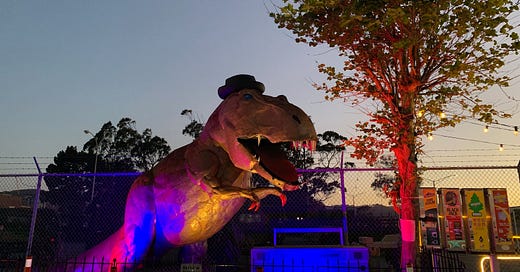


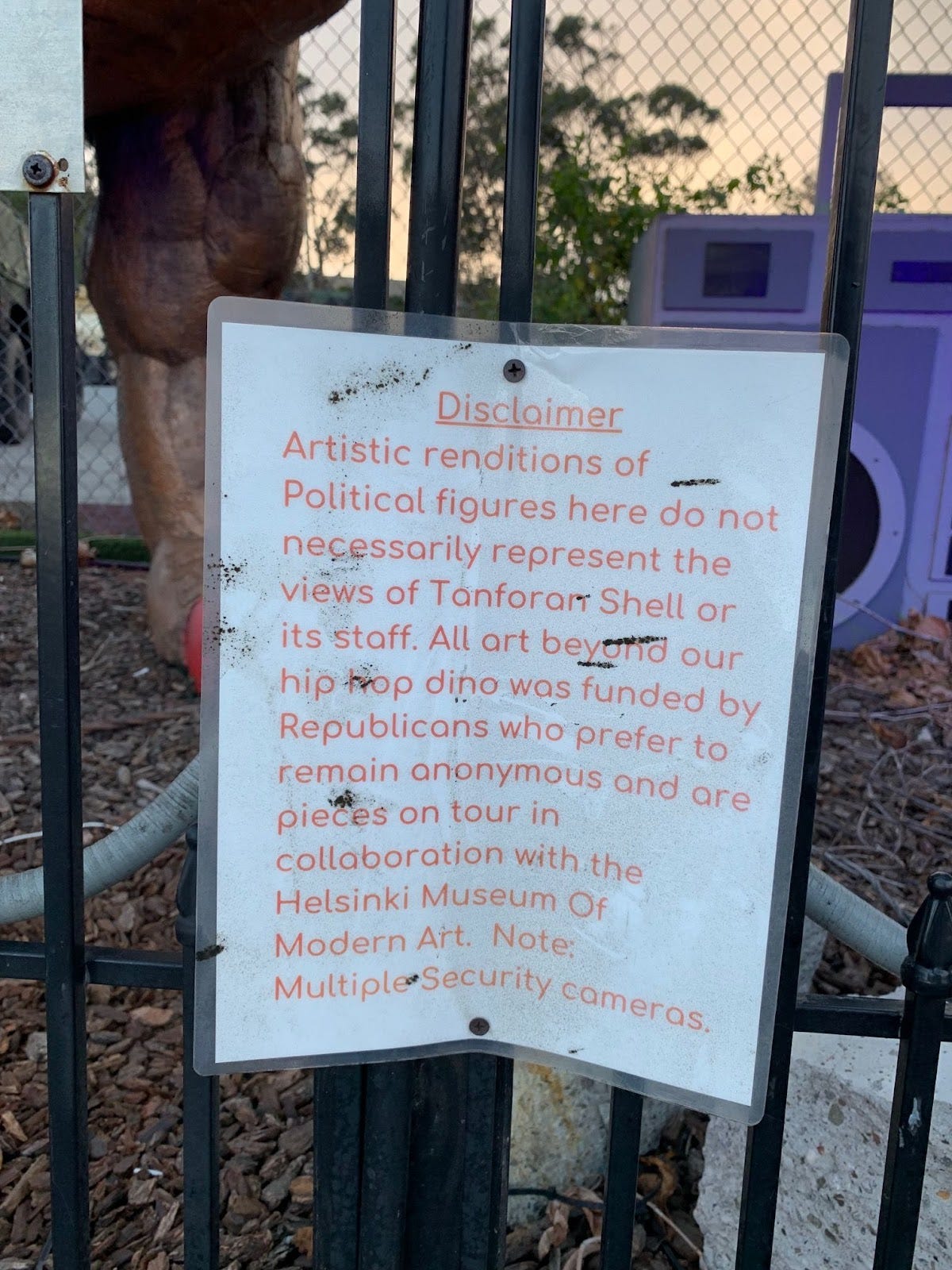

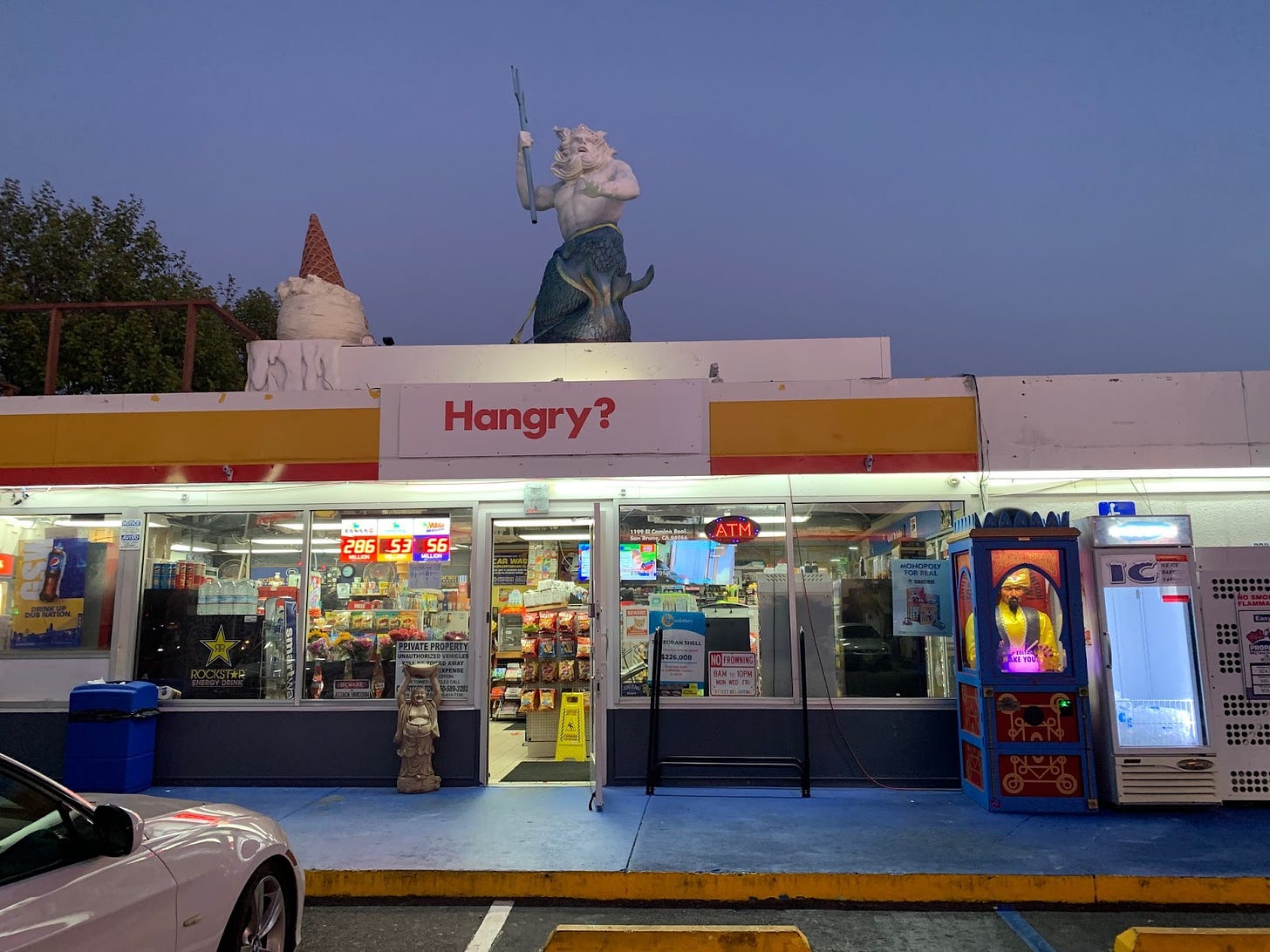
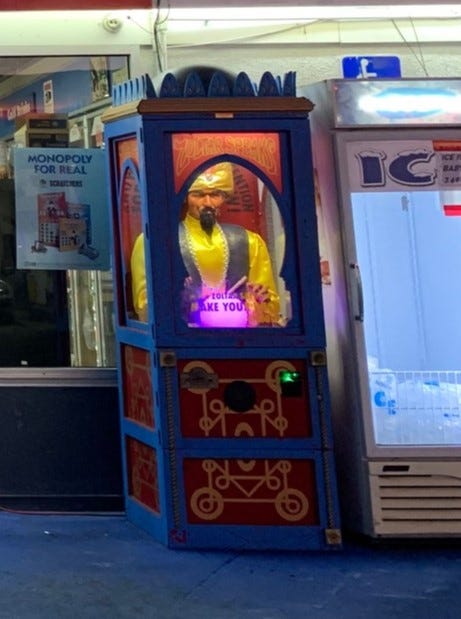
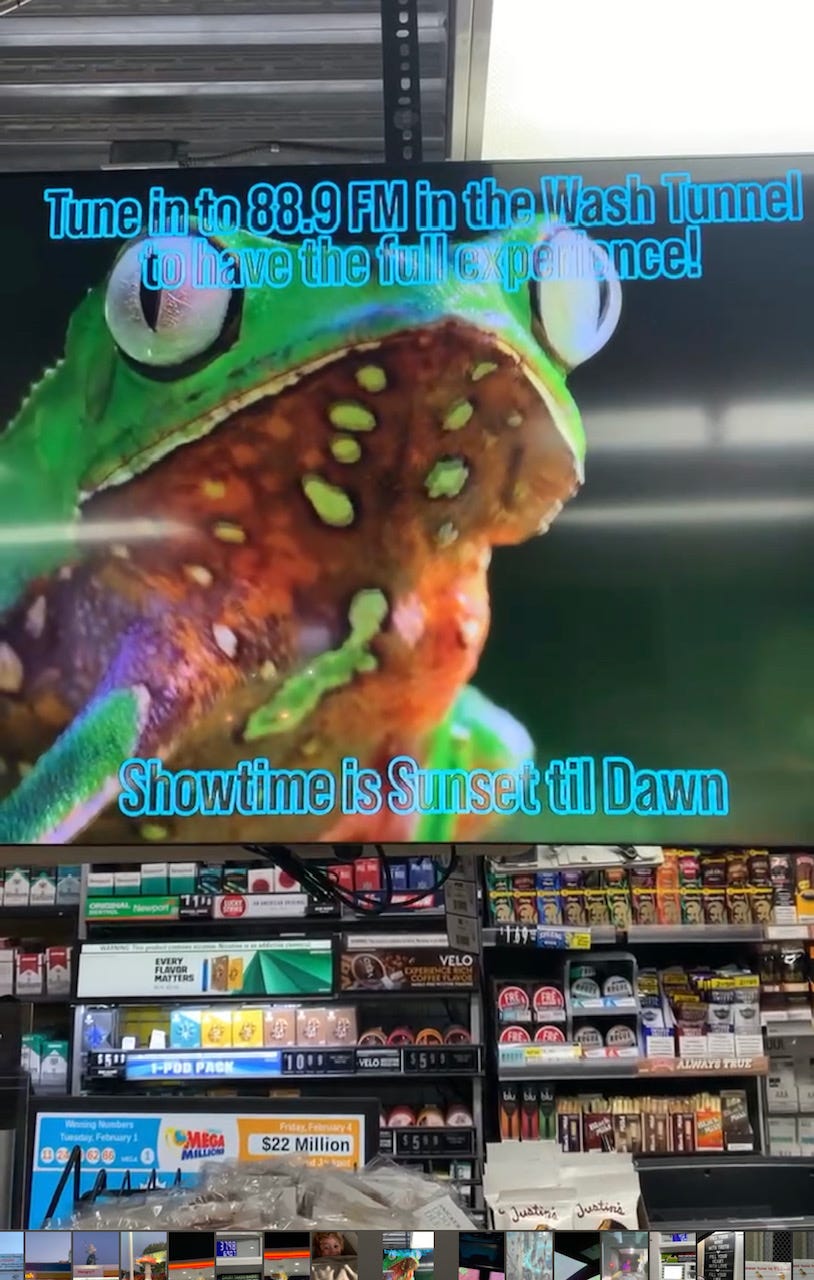



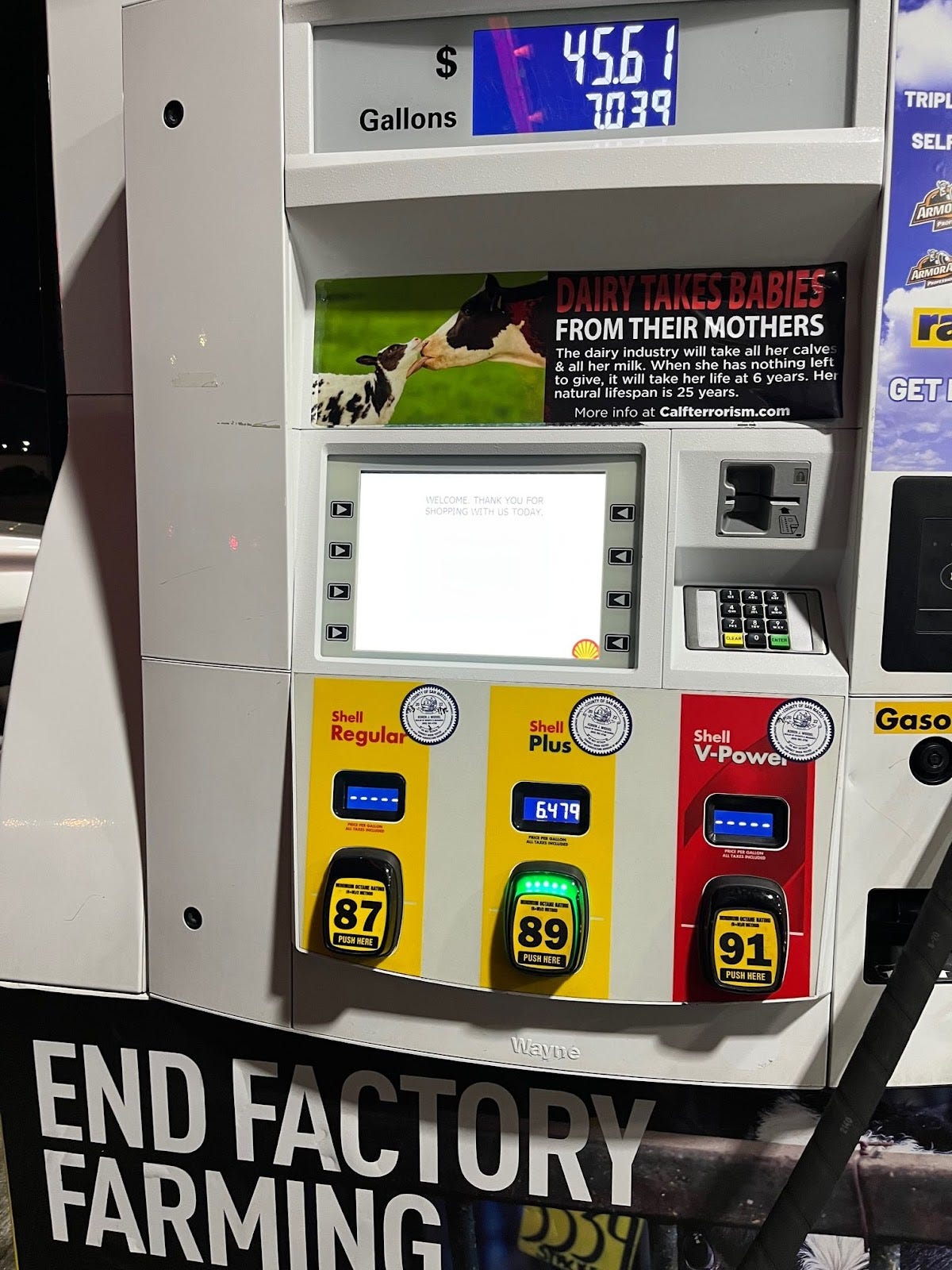


Top 3 WITI’s with this gem!
Loved this interview! Love Bobak Bakhtiari! 😊